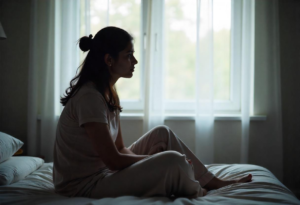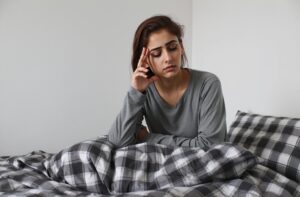Have You Been Ignoring Heavy Periods or Pelvic Pain?
If your menstrual cycle feels like a battle—heavy bleeding, painful cramps, or unpredictable spotting—you’re not alone. Many Indian women experience these symptoms but dismiss them as “normal.” However, they could be signs of uterine fibroids or polyps—common yet often misunderstood conditions affecting reproductive health.
Let’s break down the facts, clear up common myths, and help you take control of your health.
What Are Uterine Fibroids and Polyps?
Uterine Fibroids
Fibroids are non-cancerous growths in or around the uterus. They vary in size, from as small as a seed to as large as a melon. While some women may have no symptoms, others experience severe discomfort.
Uterine Polyps
Polyps are small, soft growths that develop in the lining of the uterus (endometrium). They can cause irregular bleeding, especially between periods or after sex.
How Common Are They in Indian Women?
Uterine fibroids affect nearly 1 in 3 Indian women of reproductive age, but many go undiagnosed. Polyps are also common, particularly in women over 40, but they can occur at any age.
Symptoms You Shouldn’t Ignore
Many women dismiss symptoms until they become unbearable. If you experience any of the following, it’s time to pay attention:
- Heavy or prolonged periods (soaking through pads or tampons in less than 2 hours)
- Pelvic pain or pressure (feeling like something is pressing against your lower abdomen)
- Frequent urination (fibroids can press against the bladder)
- Pain during sex (often linked to the location of fibroids or polyps)
- Irregular bleeding (spotting between periods or after menopause)
- Difficulty conceiving or recurrent miscarriages (fibroids and polyps can impact fertility)
Ignoring these symptoms can lead to complications, including anemia due to heavy bleeding or difficulty getting pregnant.
What Causes Fibroids and Polyps?
While the exact causes are unclear, several factors increase the risk:
- Hormonal imbalances – Estrogen and progesterone stimulate fibroid and polyp growth.
- Genetics – If your mother or sister had fibroids, you’re more likely to develop them.
- Obesity – Higher body fat can lead to increased estrogen levels.
- High-stress lifestyles – Chronic stress may contribute to hormone imbalances.
Myths vs. Facts
• Myth: Only older women get fibroids and polyps.
• Fact: They can develop in women as young as their 20s, especially if there’s a family history.
• Myth: Fibroids always require surgery.
• Fact: Many cases can be managed with medication, lifestyle changes, or non-invasive procedures.
• Myth: Uterine polyps are harmless and don’t need treatment.
• Fact: While some polyps may be harmless, others can cause infertility or turn precancerous.
When Should You See a Doctor?
If your symptoms are affecting your quality of life, don’t wait. Early detection can prevent complications and make treatment easier.
- If you have prolonged heavy bleeding or irregular periods
- If you experience pain during sex or urination
- If you’re struggling with infertility or frequent miscarriages
- If you’ve noticed a sudden change in your cycle
Seeking medical advice early can help determine the best course of action, whether it’s monitoring, medication, or treatment options like hormonal therapy or minimally invasive procedures.
Take Charge of Your Reproductive Health
You don’t have to suffer in silence. If you’ve been told “it’s just part of being a woman,” know that you deserve better care and accurate information about your body.
What’s next?
- Book a confidential online consultation with a specialist—no awkward clinic visits.
- Join a community of women who share real experiences and expert-backed guidance.
Your health matters. Let’s talk about it—without fear, without stigma. Start your journey today.



